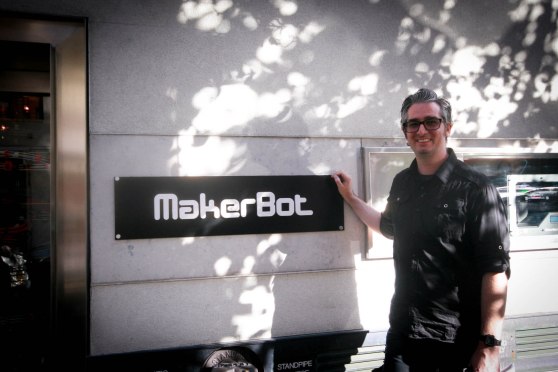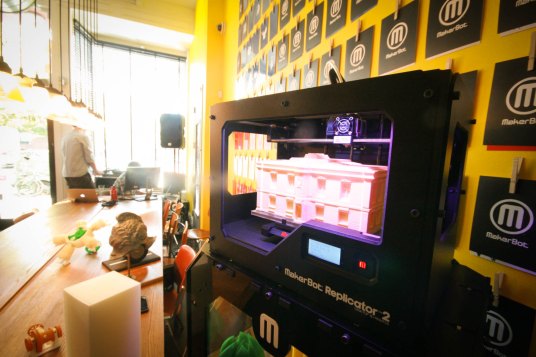The main thing MakerBot CEO Bre Pettis wants you to know about his company’s $600 million merger with Stratasys is that, no, MakerBot is not selling out.
“We’re a growing company. We’re out there to make 3D printing easier and more accesible to more people, and this will help us do that,” Pettis told me earlier today.
While it’s barely four years old, MakerBot has quickly established itself as the most hippest, most interesting 3D printing company around. This, as you might expect, automatically made it an attractive target for the 25-year-old 3D printing giant Stratasys, which, like any industry incumbent, could always use some new, innovative blood.
To put it simply, Stratasys, which is focused on the high end of 3D printing, had a consumer market-shaped hole in its product line. And MakerBot fit it.
Just consider price. Prior to acquiring MakerBot, Stratasys’s cheapest printer ran for roughly $10,000. With the MakerBot Replicator, it’s cheapest offering drops down to just $2,200. That’s huge.
The move is a smart one for MakerBot as well. As any hardware startup founder can tell you, scaling your company’s manufacturing operations is hard work — particularly if you’re manufacturing something as intricate as a 3D printer. By working alongside Stratasys, MakerBot finally has a viable way to decrease the days-long lead time for its 3D printers, which, in turn, means getting its printers in the hands of more people.
The other thing to keep in mind is that MakerBot will do most of this without Stratasys breathing down its neck. During my interview, both Pettis and Stratasys CEO David Reis stressed that, while MakerBot is now a part of Stratasys, the company is still going to do its own thing.
“We admire and like the way MakerBot operates. It’s a fast-growing, energetic company with a different go-to-market strategy, and we’d like to keep it that way,” Reis said.
Still, as Reis pointed out, there’s going to be a lot of room for so-called “synergies,” where both companies can combine their respective strengths to accomplish some larger goal. As Reis points out, one of these goals is finally providing Stratasys’s customers with a true end-to-end 3D printing product offering.
“We want people to buy from one company all they need,” Reis said, noting that Stratasys can now sell consumer printers, professional printers, and everything between.
In all, the move seems like a big win for all parties — including New York City and Brooklyn, where MakerBot was founded and continues to operate (and where it recently opened up a new factory).
“We are so proud to be growing in Brooklyn. We live here and manufacture here that’s not going to change,” Pettis said.



